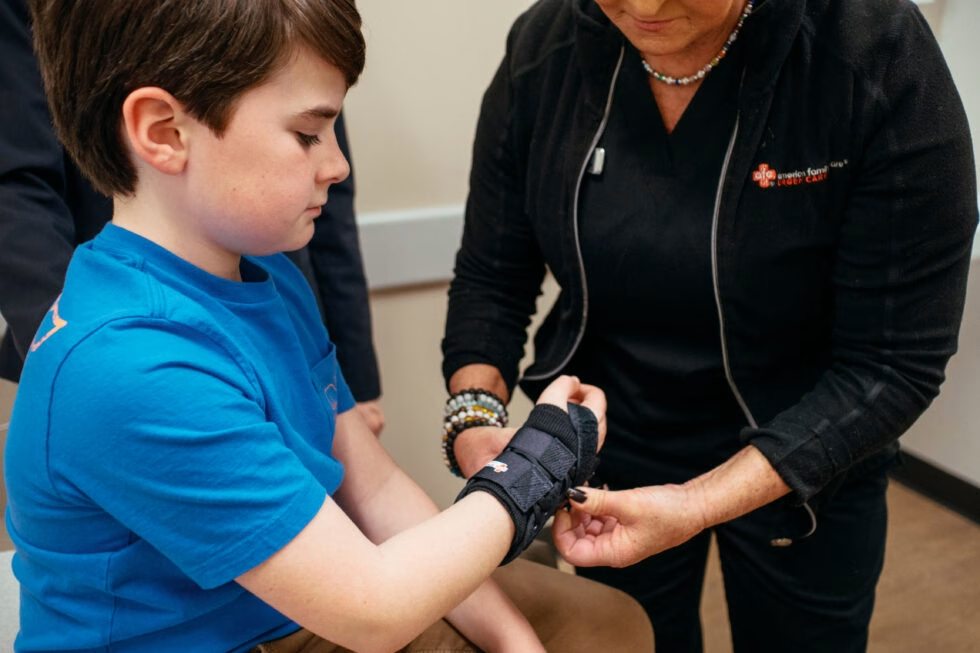
Do you think your ingrown toenail is infected? Stop by AFC for a fast & friendly examination. Know the signs & seek relief today, walk-ins welcome.
An ingrown toenail may not sound like a big deal, but anyone who has had one knows how uncomfortable – and sometimes serious – it can become. An ingrown toenail slowly progresses and usually is not noticeable at first. One minute you’re enjoying a day at Squirrel Lake Park and the next thing you know, every step is excruciating pain.
While mild cases can often be managed at home, more advanced infections need professional attention. At AFC Indian Trail, our providers are here to help you understand when to treat an ingrown toenail yourself and when it’s time to stop by for care.
What Exactly Is an Ingrown Toenail?
An ingrown toenail develops when the edge or corner of a toenail grows sideways into the surrounding skin. This usually happens on the big toe and can lead to irritation, pain and swelling if left unaddressed.
Recognizing the Symptoms
Early warning signs often include:
- Soreness or tenderness around the nail
- Firmness or hardening near the nail fold
- Mild swelling or redness
When It’s Time to Visit Urgent Care
If your ingrown toenail is only slightly painful, you can often manage it at home. However, certain changes in symptoms signal that it’s time for a medical provider to get involved.
Seek medical care right away, if you notice the following:
- Redness that is spreading instead of improving
- Swelling that doesn’t go down
- Drainage of pus or other fluids
- Severe or persistent pain
- A foul smell from the toenail area
These are all signs of paronychia, a bacterial infection that likely needs professional treatment.
How Did My Ingrown Toenail Become Infected?
Paronychia, is a condition that can start with something as small as a cut or nick in the skin near your toenail. Bacteria or fungi then enter through that opening and cause irritation and swelling. Ingrown toenails are one of the most common culprits behind paronychia.
Risk factors that make infection more likely include:
- Trimming toenails too short or rounding off the corners
- Picking or cutting the skin around your nails
- Wearing shoes that squeeze your toes
Certain groups of people (like those with diabetes or weakened immune systems) should be especially careful, since their bodies may not fight infections as effectively.
How Are Infected Toenails Treated?
The right treatment depends on the type of infection:
- Bacterial infections often require antibiotic creams or oral medication.
- Fungal infections can be treated with antifungal pills or topical products, some available over the counter and others by prescription.
- Ingrown toenails with infection: Antibiotics can be prescribed to clear up the infection or reduce it. We might have to perform a minor procedure to non-surgically remove part of the nail.
- Serious infections: In extreme situations, we will refer you to a trusted podiatrist who will evaluate your infected toenail.
A Simple Home Procedure for Mild Ingrown Toenails
If you catch an ingrown toenail early, these steps may help:
- Soaking the toe in warm water with Epsom salt will help soften the nail and ease discomfort.
- Gently lift the nail with dental floss or a tiny piece of cotton (changing it daily) to encourage proper growth.
- Apply antibiotic ointment to reduce the chance of infection.
- Cover with a light bandage to protect the area.
- Choose open-toed or roomy shoes while healing to avoid pressure on the nail.
Final Thoughts
An ingrown toenail doesn’t have to disrupt your life. If you notice signs of infection or if the pain is too much to manage on your own – visit AFC Indian Trail. Our providers can diagnose the issue, prescribe treatment and help you heal quickly.
Our walk-in clinic is open daily with extended hours, no appointment necessary. Let our team take care of your ingrown toenail so you can get back on your feet comfortably.


